USA – Greek Diaspora History
Greek Immigration to America
A Timeline of Greek Immigration to America
Greek immigration to America first commenced in 1768 and continues right through to today, with Greek Americans making up the 34th largest ethnic group in America and the largest Greek diaspora. Estimates vary on the Greek population in USA from 1.3 to 2 million, mostly as a result of how you define Greek Americans. Find out how and why your ancestors relocated in the timeline below of Greek immigration to America.
1520-1600
Although Greek immigration to America didn’t begin until 1768, in a sense that Greeks didn’t permanently relocate to America. The first Greek recorded to have set foot in the USA in 1527 was Theodoros Griego, also known as Don Teodoro. Theodoros Griego became an explorer and conquistador in Spain, joining the Narváez expedition. Learn more about Theodoros Griego here.
In 1587, another Greek explorer and captain from Spain reached the West Coast of America – Ioannis Fokas, also known as Juan de Fuca. In 1592, he returned to the West Coast of America and sailed further north. Today, the “Strait of Juan de Fuca” is named after him, located between Vancouver Island and the state of Washington, forming part of the international boundary between Canada and USA.
1600-1700
There are no records of any Greeks immigrating or setting foot in America between 1600-1700.
1700-1800
In 1768, approx. 500 Greeks from the areas of Smyrna, Crete, and Mani settled in New Smyrna Beach, Florida. The colony there didn’t last though and the settlers moved to St. Augustine in 1776. The Saint Photios Greek Chapel still exists in St. Augustine, Florida as a shrine and reminder of the Greek settlers’ presence. The chapel is the oldest known still standing Greek Orthodox structure in the USA.
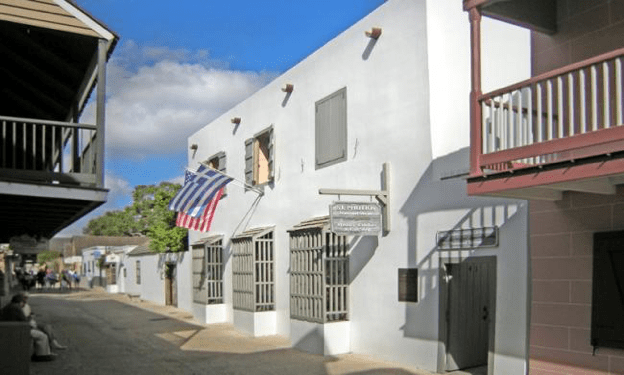
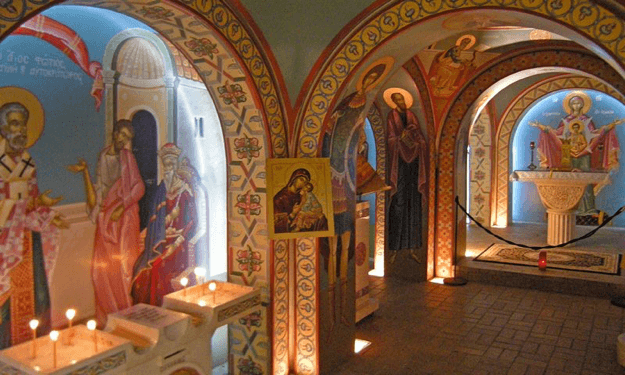
1800-1820
There are no records of any Greeks immigrating or setting foot in America between 1800-1820.
1820-1840
Greek immigration to America was propelled by the Greek War of Independence from the Ottoman Empire in 1821. This began with approx. 40 orphans who had survived the Greek Revolution and were brought to the USA by American missionaries.
In 1822, survivors of the massacre of Chios by the Turks fled and immigrated to the USA. During the war, a number of Greek merchant sailors immigrated to America from the islands, Asia Minor, Epirus, and Macedonia.
Greece became an independent nation after the London Protocol in 1830 and later the London Conference in 1832. Although Greece had won its independence, the war had caused a dire economic situation in the newly formed nation. In addition to this, many Greeks still lived outside its nation’s borders – with many islands, as well as the regions of Thessaly; Epirus; Macedonia; Thrace; and Asia Minor, still under Ottoman occupation (the Ionian islands were under British rule). This caused many Greeks to immigrate due to economic hardship and/or out of fear of reprisals from the Ottomans.
1840-1860
The first significant Greek community to develop in the USA was in New Orleans, Louisiana during the 1850s.
In 1860, it’s estimated that 328 Greeks were living in the USA, with the majority residing in California, Arkansas, New York, and Massachusetts.
1860-1880
By 1866, the community in New Orleans, Louisiana was large enough to have a Greek consulate and the first official Greek Orthodox Church in the USA. The Holy Trinity Eastern Orthodox Church served Greeks as well as Russian, Syrian, Lebanese, Slav, and Austrian Orthodox Christians.
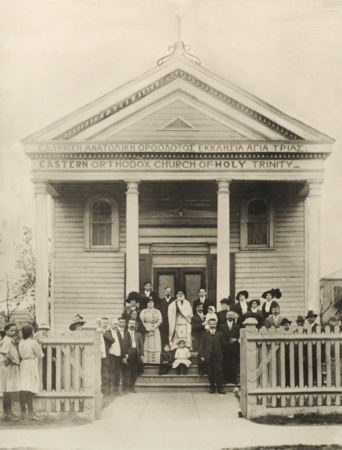
1880-1900
During the 1880s, Greek immigration to America was predominantly from Laconia in the Peloponnese.
In 1890, it’s estimated that 15,000 Greeks were living in the USA. In the 1890’s many Greeks arrived to the USA from Arcadia, also in the Peloponnese.
By the late 1800s, the Corinthian currant had become the number one exported Greek product and it was vital to the Greek economy. In the 1890’s however, international demand for raisins rapidly declined, causing the collapse of the trade of raisins – leaving many Greek farmers bankrupt. This prompted a sharp increase in Greek immigration to America.
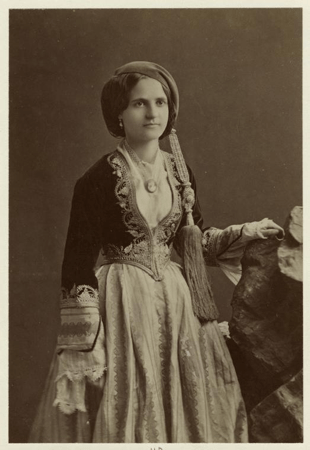
1900-1910
At the turn of the century, Greek immigration to America mainly consisted of young men, some as young as fourteen, sent by their families for work. These men were expected to return to Greece with money for their families. Many of these Greek immigrants settled in major cities on the east coast such as New York, Chicago, and Baltimore. Most initially worked in these cities as dishwashers, laborers, shoe shiners, and street peddlers. Other Greek immigrants went west to work in the mines and railroads in Nevada, Utah, and California. While others went to Florida where they worked as fishermen and sponge divers – Tarpon Springs is still famous for its Greek sponge divers.
The 1910 Census Report showed that there were 101,285 Greeks living in the USA. Men made up 93% of Greek population in USA at 93,447 – in comparison to only 7,835 Greek women.
1910-1920
1912 marked the beginning of the First Balkan War, where the kingdoms of Greece, Bulgaria, Serbia, and Montenegro fought to liberate their lands still under Ottoman occupation. This situation spurred the patriotism of 45,000 Greek Americans who returned to Greece to fight for their motherland.
1913 saw the end of the First Balkan War and the Second Balkan War, which lasted little over a month. The Second Balkan War broke out when Bulgaria attacked its former allies Greece and Serbia over dissatisfaction with its territorial gains from the First Balkan War. The conflict saw Greece gain additional territory in Macedonia, liberating more Greeks.

After the Balkan Wars, most Greek American young men who had fought in the conflicts decided to return to the USA and invest their hard-earned money into establishing small businesses. This change of heart from a temporary residence to permanent residence in the USA saw an increase in female Greek immigration to America. Many Greek women who arrived helped establish Greek Communities, Greek Orthodox Churches, and other Greek traditions in the USA.
1914 marked the beginning of World War 1, which lasted over 4 years. During the war, approx. 70,000 Greeks fought on behalf of the USA.
In the meantime, Greek Americans remaining in the USA began establishing Greek restaurants which flourished so much so, that by 1919, one third of Chicago’s restaurants were run by the Greek diaspora.
By 1920 the Greek population in USA increased by 126,770 from 1910 to a total of 228,055.
1920-1930
Greek immigration to America decreased substantially in the 1920’s due to the Immigration Acts of 1921 and 1924, which established immigration quotas in the USA. The 1921 Act capped the number of Greek immigrants to 3,063.
In 1922, the Greek diaspora in the USA established the American Hellenic Educational Progressive Association (AHEPA) to protect Greeks from prejudice and discrimination.
In 1923, the Greek diaspora in the USA established the Greek American Progressive Association (GAPA) to preserve the Greek language, religious and social practices, and customs.
The 1924 Act capped the number of Greek immigrants to 100. Following numerous petitions however, the quota was increased and between 1925 and 1929, approx. 10,883 Greek immigrants arrived in the USA.
Overall, between 1920 and 1930 Greek immigration to America decreased by 40% from the previous decade, with only 75,696 new arrivals.
1930-1940
In the 1930’s Greek immigration to America continued to decline, decreasing by 53% from the previous decade, with only 22,921 new arrivals.
1939 saw the break out of WWII, right at the end of the decade.
By 1940, the Greek population in USA was estimated at 326,672 – with 68% being male.
1940-1950
28 October 1940 saw Greece enter WWII with the Italian invasion. The subsequent Greek victory in not only defending the country’s territory against the invasion but also in the successful offensive, pushing the Italians back deep into Albanian territory was viewed immense support and euphoria globally. Greek Americans led fundraising initiatives and support for Greece in their diaspora. Greeks were viewed with admiration and respect in the USA.
7 December 1941 saw the USA enter WWII with the Japanese attack on Pearl Harbor. Many Greek Americans joined the war fighting for the USA.
12 October 1942 saw the first Greek American (from Chicago) killed in WWII. Leo A. Loumbas was a 24-year old Apprentice Seaman in the United States Navy.

WWII ended in 1945 and almost immediately after, Greece entered another dark faze in their history with the Greek Civil War commencing in 1946 and lasting until 1949.
With all the conflicts that ravaged the 1940’s, Greek immigration to American was at an all-time low.
1950-1960
Following on from the conflicts during the previous decade, the 1950’s saw a resurgence in Greek immigration to America.
In 1953, the Refugee Relief Act allowed 17,000 Greeks to arrive to the USA.
Then in 1957, additional legislative changes saw approx. 1,504 Greeks arrive to the USA.
1960-1970
In 1965, the Immigration and Nationality Act abolished the quota by country system. Many Greek Americans took advantage of the new law and brought members of their families to the USA.
Around this time also came a change in the demographic of Greek immigration to America. The Greeks arriving now were better educated and in many cases skilled immigrants, as opposed to their predecessors in the first half of the 20th Century.
1970-1980
Between 1950 and 1980, Greek immigrants to America had established more than 600 diners in New York. It was during the 1970’s that Astoria first became referred to as the “Greektown” of New York.
1974 saw the Turkish invasion of Cyprus, which was the precursor for the largest wave of Greek immigration to America from Cyprus. A testament to the size and influence that the Greek diaspora now held in the USA, was the USA sanctions imposed on Turkey during 1975 and 1978 – largely as a result of Greek American demonstrations and Greek-American members of Congress such as Representative John Brademas and Senator Paul Sarbanes.
Between 1965 and 1975, more than 142,000 Greeks arrived in the USA and between 1960 and 1980, more than 170,000 Greeks arrived in the USA. The majority of Greek immigrants during this period settled in New York City and surrounding areas.
The Greek population in Astoria, New York City alone was approx. 22,579 in 1980.
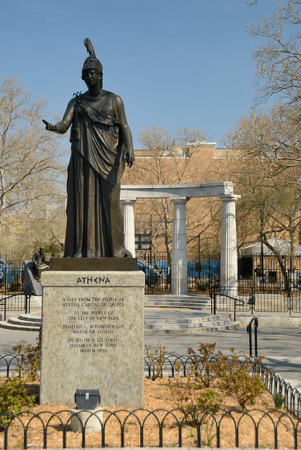
1980-1990
1981 marked Greece’s admission into the European Union. As a result, annual Greek immigration to America declined to approx. 2,000. Most Greeks immigrating, instead opted to settle in nearby European countries due to the ease of movement within the European Union.
The 1990 Census Report showed the number of people claiming Greek ancestry at 1,110,373 – with approx. 37,729 new Greek arrivals during 1980-1989.
1990-2000
The 1990’s continued to see a decline in Greek immigration to America, largely as a result of the European Union migration policies but also due to Greece relative economic prosperity.
Between 1990 and 1999, approx. 25,403 Greeks arrived in the USA.
2000-2010
The turn of the millennium didn’t correlate to a turn in Greek immigration to America, as it continued to decline with only 16,841 new arrivals between 2000 and 2009.
In 2007 and 2008 the Global Financial Crisis hit and Greece was one of the hardest hit countries in the world.
By 2010, it is estimated that 1.5 million people of Greek ancestry were living in the USA.
2010-2020
Following the Global Financial Crisis, the 2010’s saw an increase in Greek immigration to America. Between 2010 and 2012 approx. 3,426 Greeks arrived in the USA.
In 2013, Greece’s unemployment rate reached an all-time high of 27.80 %, as reported by CEIC Data. This sparked even more Greeks reaching out to their relatives in the diaspora for work opportunities abroad.
Between 2011 and 2015, approx. 6,704 Greeks arrived in the USA. Today, it’s estimated that between 1.5-2 million people in the USA are of Greek ancestry. Most Greeks in the USA are located in the cities of New York, Chicago, and Boston.

Do you have a connection to Greek Diaspora in the U.S.? Trace your ancestry to find out. There are a number of DNA tests available but the most common and most trusted of them all is Ancestry.com

